SELECTED FILMOGRAPHY
Dreamaniac (1986)
Nightmare Sisters (1987)
Creepozoids (1987)
Nightmare Sisters (1987)
Sorority Babes in the Slimeball Bowl-O-Rama (1988)
Lady Avenger (1988)
Nightmare Sisters (1988)
Lady Avenger (1988)
Murder Weapon (1989)
Deadly Embrace (1989)
American Rampage
(1989)
Nightmare Sisters (1987)
Dr. Alien (1989)
Puppet Master III: Toulon's Revenge (1990)
Naked Instinct (1993)
Beach Babes from Beyond (1993)
Test Tube Teens from the Year 2000 (1994)
Petticoat Planet (1996)
Prey of the Jaguar (1996)
The Journey: Absolution (1997)
Skeletons (1997)
Leather Jacket Love Story (1997)
Shrieker (1998)
Curse of the Puppet Master (1998)
Talisman (1998)
Frankenstein Reborn! (1998)
The Killer Eye (1999)
Ancient Evil: Scream of the Mummy (1999)
Witchouse (1999)
Totem (1999)
Retro Puppet Master (1999)
Voodoo Academy (2000)
Prison of the Dead (2000)
The Brotherhood (2001)
Final Stab (2001)
The Brotherhood II: Young Warlocks (2001)
The Frightening (2002)
The Brotherhood III: Young Demons (2002)
Wolves of Wall Street (2002)
Leeches! (2003)
Speed Demon (2003)
Ring of Darkness (2004)
The Sisterhood (2004)
Killer Bash (2005)
Witches of the Caribbean (2005)
Beastly Boyz (2006)
Grizzly Rage (2007)
The Raven (2007)
House of Usher (2008)
The Invisible Chronicles (2009)
Son of a Witch (2009)
Stem Cell (2009)
The Pit and the Pendulum (2009)
Nightfall (2009)
Puppet Master: Axis of Evil (2010)
Body Blow (2010)
The Food of the Gods (2010)
Edgar Allan Poe's A Dream within a Dream (2011)
The Haunted Palace (2011)
CLICK HERE FOR DVD TITLES
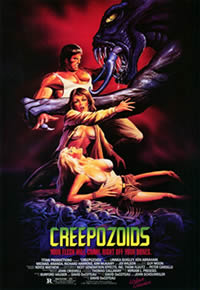
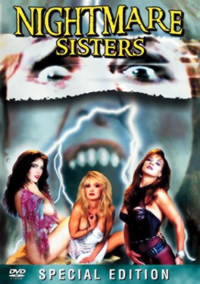
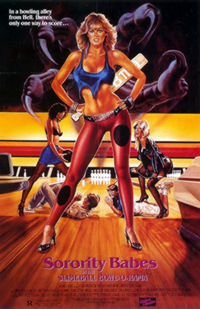
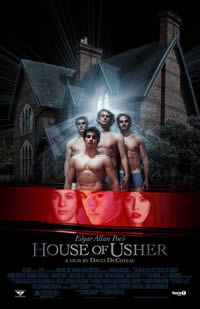
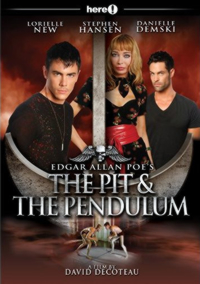
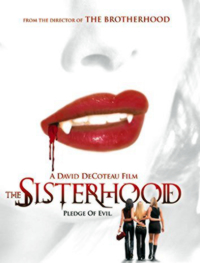
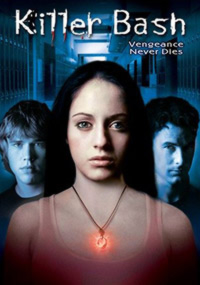
|
|
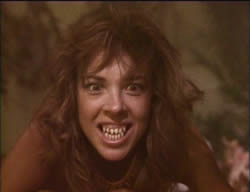
One of the busiest names in B-movies since the mid-'80s, Canadian-born David DeCoteau has weathered the storm from the heyday of VHS through the entire DVD era with a string of fan favorites for Full Moon Studios and his own company, Rapid Heart Pictures. He directed some of the most popular films for scream queens like Linnea Quigley, Michelle Bauer, and Brinke Stevens, even uniting the three for the immortal Nightmare Sisters. In the past decade he turned the horror genre upside down beginning with the surprise hits Voodoo Academy and the long-running The Brotherhood series which put the focus on young men as monsters and lust objects more than the usual actresses, paving the way for new demographics of viewers who are now being courted by the big studios as well. Now DeCoteau talks about the state of the indie horror business, his latest plans, and the reasons he's had so many pseudonyms over the years...
MONDO DIGITAL: What was the motivation that caused you to start working in horror films in the mid-'80s, and how did you wind up with so many cult actors from the beginning?
DAVID DECOTEAU: Horror was the only genre you could jump into that was a director’s medium, and you could also produce a film without name stars and still get it sold. It was a very small pool of talent back then, prior to the internet, so you would refer friends to friends. For example, I’d worked on a short film with Linnea Quigley and she referred me to Michelle Bauer. Then I was introduced to Brinke Stevens, and we all became fast friends and started working together. We would cast through a publication called Dramalogue, and if you enjoyed working with an actress, they’d be referred on to other directors like Fred Olen Ray.
What kind of friendship or professional relationship did you have with other directors in the same area at the time?
In the mid-‘80s there were only about six of us who were full-time B-movie directors in Los Angeles; at least, ones who were always in pre-production, full production, or post. We all got to know each other pretty well. It was myself, Fred Ray, Jim Wynorski, David Prior, and a couple of others. We were all working nonstop in L.A.; it was a very busy time. I had originally met Fred through his editor, Miriam Preissel, who edited Creepozoids and introduced me. I’d already seen articles on Fred in Fangoria so I was really pleased to meet him. I was a fan and still am!
How and when did you decide to start branching out into other genres like action, sci-fi, and erotica?
I like all genres of movies, and horror was popular domestically. However, action was the most commercially viable worldwide, so I did Lady Avenger and Ghetto Blaster which did very, very well. We worked in all the B genres: action, sci-fi, horror, exploitation, family films, even a western. Whatever was popular at the time, I would do. Sometimes the demand of international currency would change from action to something else, erotic thrillers in particular in the '90s.
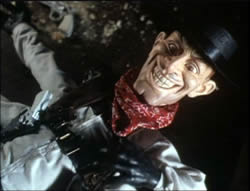 How did you get a gig directing the third Puppet Master film? How did you get a gig directing the third Puppet Master film?
I directed more movies for [Full Moon founder] Charlie Band than any other director, almost thirty movies, and I got Puppet Master III: Toulon's Revenge by default since I was in Romania and available to shoot. I was very excited about that, and it worked out very, very well. We had a video output deal with Paramount which meant we had more money to spend, prior to DVD. You could spend $750,000 to a million on these films, but what we were concerned about was having exceptional FX since that was really popular.
You directed three more films in the series: Curse of the Puppet Master and Retro Puppet Master in the late '90s and 2010's Puppet Master: Axis of Evil. What kind of changes did you notice with Full Moon and its fanbase over these three different periods?
Working with Full Moon now is different because Charlie self distributes, and the budgets have been much more reduced. I think there are still fans from the old generation who still watch the films, but there’s also a whole new batch of young people that are being introduced to them, Puppet Master in particular, who like the films. It’s constantly churning. There’s so many different ways to watch the movies now so you don’t know how popular they are; some prefer via Netflix versus buying a copy from Amazon.
How is the home video industry in general different now for indie product?
There are more people doing it now which means less shelf space, so there’s more competition. Because of the Internet it’s not impossible to find a title you want, but it ‘s different. The cost of VHS back then was $89.95, and DVDs are $19.95, so there’s not a lot of money in it now. The video stores are consolidating, so it’s more of an online kind of business now.
So what keeps you going now when so many people only stick with it for a few years?
It’s because this is what I wanted to do my whole life, and I also constantly reinvent myself. When I find a new genre that I can market, I stick with it and try to squeeze every dollar out until something else comes along. Since 1999 I’ve been doing my Rapid Heart movies, which are supernatural thrillers made for girls. I’ve done about 35 of those, combining two different genres together That’s worked out so far, so good. I’m also thinking about doing another change again once this plays out. It’s all about being able to move quickly on a popular genre and keeping the overhead low and producing more efficiently, so I just stick with it. I don’t have any other skills! It’s not like I can move into anything else; it’s what I was put on earth to do!
Your Rapid Heart films in particular turned out to be way ahead of the curve; if you look at the Twilight series in particular, especially the third one, there's an obvious debt to your films.
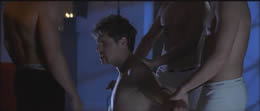 I love the Twilight craze! In 1999 when I was pitching the first movie like that, everyone looked at me like I was completely bonkers. Then a few years later, [Renny Harlin's] The Covenant came out and most of the critics said it was just a big budget Dave DeCoteau movie. Then Twilight came out, and they were promoting the films in a very similar fashion. I’m not saying they’re copying me, but it proves I was right all along. I guess I’m a a year and a half ahead because I’ve discovered so many young actors – Sean Farris, Glee's Corey Monteith, people like that – who have taken off, but I discovered them first. Probably a little farther ahead than most. To me it’s so obvious, you know. I love the Twilight craze! In 1999 when I was pitching the first movie like that, everyone looked at me like I was completely bonkers. Then a few years later, [Renny Harlin's] The Covenant came out and most of the critics said it was just a big budget Dave DeCoteau movie. Then Twilight came out, and they were promoting the films in a very similar fashion. I’m not saying they’re copying me, but it proves I was right all along. I guess I’m a a year and a half ahead because I’ve discovered so many young actors – Sean Farris, Glee's Corey Monteith, people like that – who have taken off, but I discovered them first. Probably a little farther ahead than most. To me it’s so obvious, you know.
How do you prepare your actors for the fact that they won't be portrayed in the most traditional way for a horror film?
There’s always a real discussion that this isn’t going to be your typical horror movie, and it’s easy to find clips online now so the guys know what they’re getting into way beforehand. Early on it was more difficult, but I’ve never included anything I’d consider vulgar. I try to keep out the coarse language and graphic violence, going more for a PG-13 approach. For example, one of the first Rapid Heart movies was licensed to Blockbuster, and they continued to do very well in that field.
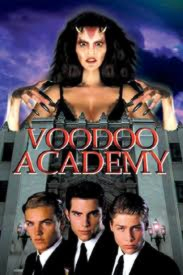 What about Voodoo Academy from Full Moon, the first film of that kind, which came out in two versions, a watered-down version and then an unrated version that was pretty strong for the time. What was the reason? What about Voodoo Academy from Full Moon, the first film of that kind, which came out in two versions, a watered-down version and then an unrated version that was pretty strong for the time. What was the reason?
Voodoo Academy was during the transition between VHS and DVD, and this was the first horror movie “for girls.” Charlie felt that I kind of overdid those images and couldn’t understand how he was going to sell it. A 72-minute version was cut, and then that went out and we actually sold deep into Hollywood Video and Blockbuster on the VHS release. When it came time for Full Moon to get into DVD, three titles were slotted to go out unedited. We thought we’d risk it with that one, and one person in Domestic Sales and another one in International got what it was trying to do and decided to take it. They picked up the unrated one, and that was it. The whole style of my films completely changed. Online it was controversial because it really delivered for an audience that was starved for that kind of thing.
Why did you use a pseudonym on so many of your non-horror titles like Ellen Cabot, Julian Breen, etc., and why are there so many alternate versions floating around between cable and home video?
When you deal with erotica, you end up with multiple versions because distribution channels need an R rating. So there’s usually two versions. Sometimes there are ones I put my real name on, and other ones I would not. There wasn’t an exact science; each movie presented its own results as far as whether the film had to be cut. On Voodoo I went by my name only on my cut on the DVD. With the Torchlight ones like Beach Babes from Beyond, we maximized the eroticism and got NC-17s. Paramount insisted we cut all of them down to R ratings, so all the “commercial” material was cut. Then we made unrated versions, but certain masters were lost. Also the company was going through a lot of transformations, so the masters just got waylaid somewhere along the line. Also I was in the DGA and working under assumed names because I was hiding from the Guild at the time. Then I tried to give each genre its own type of pseudonym: Ellen Cabot did erotica, Joseph Tennent did children’s thrillers, Julian Breen did kid’s horror. I tried to mix it up so I didn’t have too many movies on the market.
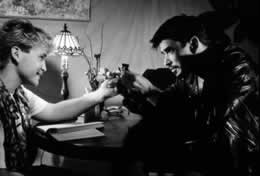 One film of yours that stands out in your filmography is Leather Jacket Love Story, a B&W indie gay love story that earned some of your best reviews. How do you feel looking back on that one now? One film of yours that stands out in your filmography is Leather Jacket Love Story, a B&W indie gay love story that earned some of your best reviews. How do you feel looking back on that one now?
It was something I needed to do at that time in my life. I’d been working so much I felt like I needed to make an art film, or at least take more of an artistic approach. I had a producer I’d worked with who wanted to try something as well, and we developed the script. That was a very low budget movie, in B&W, with a great cast. It was very bold in terms of my approach to it. I went completely explicit with my vision of it; I wanted to get right into the bedroom of these lovers and see that passion. It was pretty unflinching at the time, and it was a film festival hit. The problem I had was that it was so bold it was limited where it could play. When it came out on VHS and DVD, Here bought it so we could get a national VOD company to carry it, too. We did very well that way, and now E1 is releasing it on DVD again in an updated version, remastered and everything.
It's still pretty surprising you could get an established actor like Christopher Bradley to go so far.
There was a lot of discussion about my intentions with the film. I explained to the actors I wanted to be honest with the nudity and the sexuality. Christopher was quite gung ho; the fact that it was in B&W also allowed him to think of it as more of artistic effort than a commercial one. The difficulty with casting the lead was finding a young man to play 18 years old who can act and do full frontal nudity and simulated sex. We went through many actors, and every time we chose someone, they would pass. We lost so many actors; it was the most difficult casting job I ever had to do. Then I found a young actor in a casting studio thanks to Arlene Golonka, an actress in the film. There I met Sean Tataryn, this Canadian kid. I asked him to come in and read, and he said sure. I told him about the content and what was required, and he said nope, no difficulty, and he just went for it. That applies to everyone really, they all went for it. Looking at it now it’s kind of ridiculous how I went all out with that one; it’s insane. I also got to work with Mink Stole for the first time; it was great. It was shot in 10 days in West Hollywood and Silverlake, and the film was so heavily promoted; the producer really got behind it. We were the opening night film in New York at the Gay & Lesbian Film Festival; the producer was also able to get a festival license on some of my favorite music like Erasure. “Breath of Life” was one of my all-time favorite songs, and we could license it just for festivals. There’s nothing like going to an opening night at a fest with 800 seats, and there’s your little B&W art movie, and your favorite song is the theme! It’s a pretty cool feeling, you know. Looking back it’s nice to see this oddball little movie. I wanted to make the sex scenes fun; I wanted people to smile. It was a really enthusiastic celebration of gay romance, and that was not that popular back then. In the mid ‘90s you had a lot of films about AIDS, gay bashing, dark stories that were depressing. Being gay is not a dilemma to the people in this movie; they fall in love, and the dilemma is finding the right partner and finding sexual maturity, learning how great love can be. Some critics got it, some didn’t. For the most part it was a nice experiment, and it’s still silly but a lot of fun.
How much attention do you pay to the reviews for your films?
I don’t really care about reviews too much. I don’t even really read many comments online either; everyone has their own opinion, and the Internet has become a soapbox for bitter people who don’t like anything. Some of my favorite films have the worst reviews, and some terrible movies have great reviews. It’s more a question of whether I'm happy with the films and how well they did.
What caused you to go out from the umbrella of other companies and start Rapid Heart yourself?
Commercial success was the trigger for Rapid Heart. I made Voodoo Academy really inexpensively, and it grossed a lot of money. I can’t make a movie unless the commercial results are strong. Even though there’s no exact science to a film’s success, there are elements you have to have or shouldn’t have to make a film work. I knew I was doing something very popular because the numbers were so high.
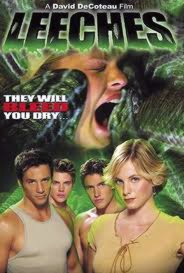 Two of the most entertaining Rapid Heart titles, Leeches! and Ring of Darkness, were scripted by Fangoria's Mike Gingold. How did he come aboard? Two of the most entertaining Rapid Heart titles, Leeches! and Ring of Darkness, were scripted by Fangoria's Mike Gingold. How did he come aboard?
I’d known Mike Gingold for years, and Tony Timpone [editor at Fangoria] as well. I was always invited to appear at their conventions, and when I was traveling in New York I’d see Mike. Since he was an expert in horror films, I felt he’d be the perfect writer for something like a creature feature, which I wanted Rapid Heart to do. Leeches! was truly the first Rapid Heart title, and just mentioning what I wanted to do, Mike could wrap up my idea and turn it into a terrific script. I was really happy with how it came about.
Ring of Darkness must easily be your most widely aired movie on cable. I don't think it's gone out of circulation from Showtime for years.
Yeah, it depends. For example, I think the way the license was negotiated, they were allowed unlimited runs and were allowed to do that. It’s such a very silly little movie; we shot it in eight days. It’s a boy band horror movie, and it’s really about the demise of boy bands. I really like that film actually; we had a good experience. It’s a strange film, too, because it started out as something completely different but then it evolved. It was nice to be able to do dance numbers and choreography in a horror film! And Adrienne Barbeau!
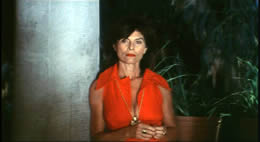 How did she get cast in the film? How did she get cast in the film?
The role was going to be played by Antonio Sabato, Jr., and after that I wanted Dolph Lundgren. Then someone decided to give the character a female angle, a lesbian back story where she had a relationship with another girl, and I thought, well, okay. So we went with Adrienne Barbeau, and it was a lot of fun. One of my first jobs in Hollywood was as a production assistant on Escape from New York, and she was one of the stars. She worked every day and she’s just one of the guys; she understands filmmaking, how film directors work. She's also very much into indie films and very patient. She’s really wonderful.
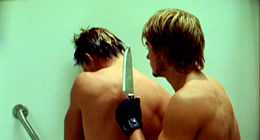 You also flirted with a much harder take on the formula with your Rapid Heart Extreme title, Beastly Boyz. Is that going to remain a one-off film? You also flirted with a much harder take on the formula with your Rapid Heart Extreme title, Beastly Boyz. Is that going to remain a one-off film?
Over the years the films had a lot of fans, but some wanted me to push the envelope and go really dark. Rapid Heart Extreme was a way to satisfy the fans, and that was an experiment. It was relatively successful but not as much as I was hoping it would be, but I might do another one. I’d do it differently though. I enjoyed making that film, and I think it delivers what it promises, but I don’t know if I’d do another one exactly like it.
So far you've done six Brotherhood films. Any idea whether you'll do another one and which direction it would take?
There’s not a direction of where to take the series, but there’s always talk. Right now the people who finance and own the franchise are Regent and Here TV, and they’re in the process of focusing on their iconic gay brands and building up the customer base so we can release those on the Internet. They could increase their viewership on their sites because once we have that set up, we can release them directly on the Internet through outlets like Gay.com.
Some of your later Regent titles like The Pit and the Pendulum had really unusual release methods, premiering as pay titles on Here and showing in one-off screenings in major city markets theatrically long before they came to DVD. What was the rationale for that?
The idea was that they wanted to squeeze money out of VOD before DVD with Here, which is a pay on demand company. They wanted to maximize their revenue first. That worked pretty well, but also, some of the titles were available on Gay.com in their premium section. DVD is a maturing business, and it’s not exactly a big one for independents. It’s very spotty. VOD is kind of where it’s at right now.
How did you decide to start using the works of Poe as springboards for some of your films?
I’ve always been a fan of the classic authors, and so was the man who was financing the first batch of movies. We decided to stick with that because those are stories that have a really classic cachet that people are familiar with. We wanted people to stick with something that had a queer sensibility but a bit of a pedigree as well. That worked out really nicely, and those films were really successful for them. I’m continuing to do that with films like Edgar Allan Poe’s A Dream within a Dream, H.G. Wells’ Food of the Gods, and The Haunted Palace. I also just finished shooting Wicked Stepbrother. I’ve even got a Jane Austen script being written right now!
That's got to be a Jane Austen film like no other! What about H.P. Lovecraft? It seems like his blend of the monstrous and the perverse would be a natural fit.
There’s been talk of Lovecraft but it hasn’t come up too much. I probably will try one at some point, but nothing’s set yet.
What can we expect from Food of the Gods? Presumably it'll be very different from the '70s version with giant rats.
Food of the Gods is more about giant killer bees this time as opposed to rats in the last one. We shot it in three countries: Puerto Rico, the United States (Malibu), and Bowen Island where Bert Gordon shot his version. We even used some of the same locations. Ida Lupino’s old house from that is gone so we couldn’t shoot there; it’s been 35 years, so it was tough. We did find two of the same spots, so I’m pretty proud of that. The story's about med students on a Caribbean island doing an experiment that gets out of control and the bees grow to the size of footballs and start attacking the guys! Well, and one girl.
|
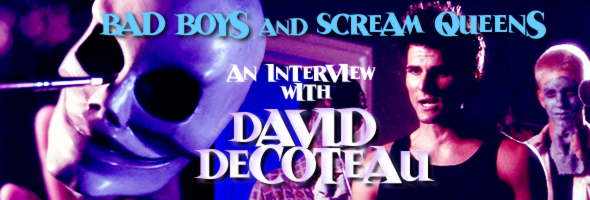

![]()